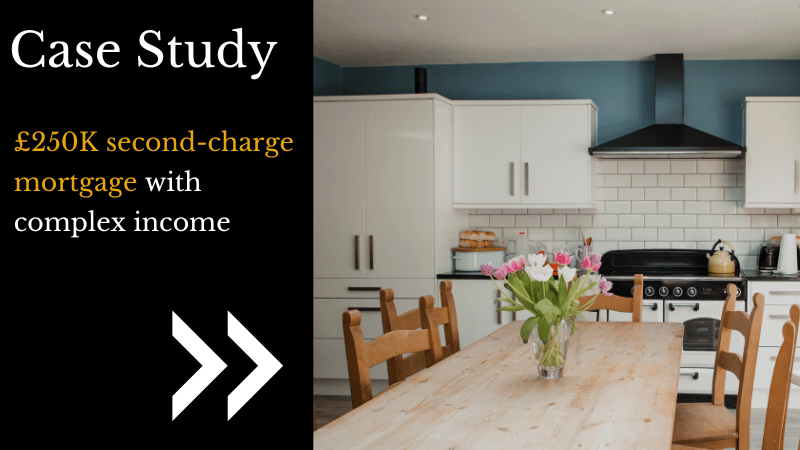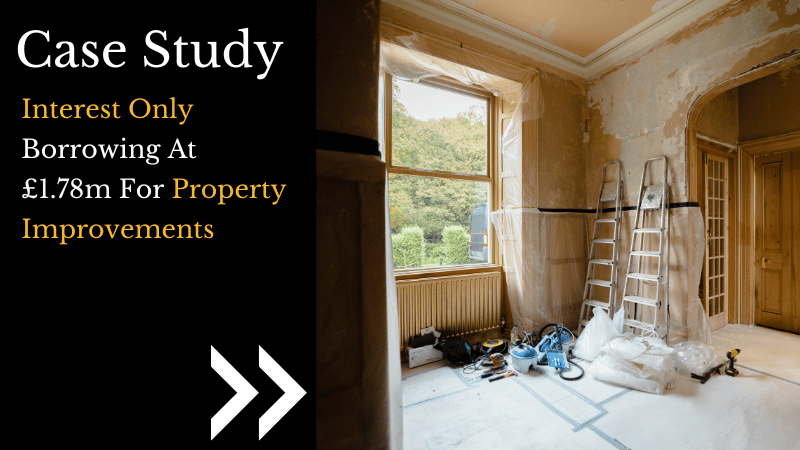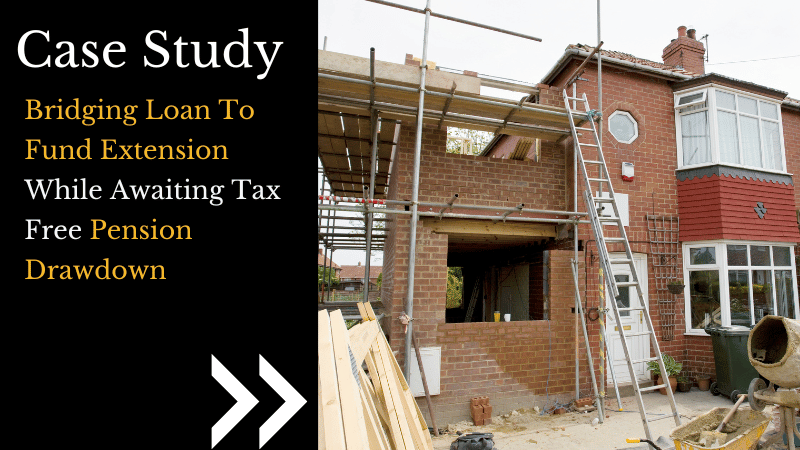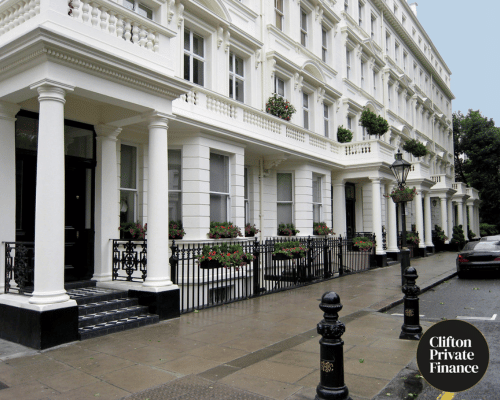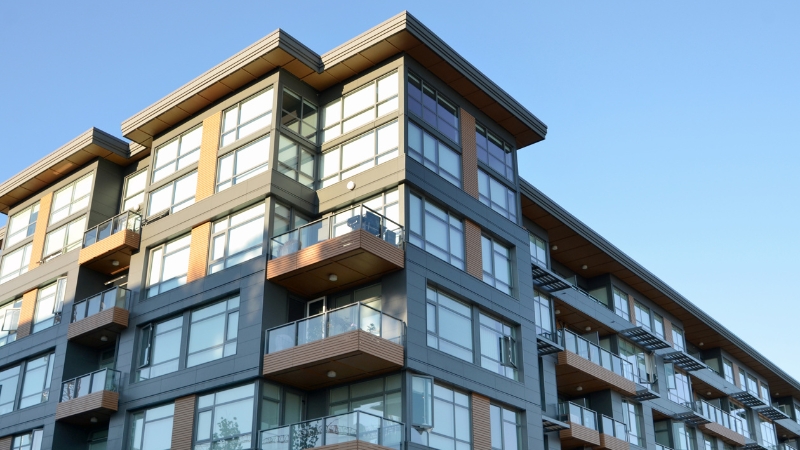Categories
How to Release Equity for Home Improvements | 6 Best Options

When you are a homeowner, you soon realise that there’s a financial impact beyond simply paying for the mortgage. While you are repaying the loan you used to buy your home, you will also need to deal with keeping that house in top condition.
Many home renovations are minor enough that they can be paid for with your day-to-day finances, however some are costly enough that you may need financial support to get them done.
At Clifton Private Finance, we help our customers navigate the complexities of property-based finance, with a range of funding solutions that will enable you to keep you house in the finest condition, improving its value and building on your investment for the years to come.
Key Takeaways
- The equity built up in your home can be unlocked to provide the funds you need for home improvements.
- With a range of loan options, there’s a home equity release structure to fit your individual needs.
- Home equity loans can be obtained even when you still have a mortgage tied to your home.
- Making the right home improvements can quickly raise the value of your property.
- Clifton Private Finance are your partners for finding the right cost-effective and flexible loan to fit your needs.
Understanding Equity and Its Uses
Equity is the term used by financial institutions to mean the investment you have in your property. It can be easily understood as the portion of your property you own completely, not tied up with a mortgage or other secured debt.
If you’ve paid off your mortgage in full, then you have complete equity (100%), whereas, if you’ve paid half your mortgage, your equity may be closer to 50%.
Equity can be easily calculated by comparing the market value of your property against the current balance of your mortgage. This is calculated as:
Examples include:
- A property worth £350,000 with an outstanding mortgage of £175,000, has equity of £175,000, or 50%.
- A house valued at £280,000 with a mortgage balance of £110,000 results in equity of £170,000, or 60.7%.
- A flat on the market for £185,000 with a remaining mortgage total of £63,000 equals equity of £122,000, or 66%.
- A home newly bought for £480,000 with a mortgage of £400,000 means only £80,000 in equity, or 16.7%.
- A luxury home at £1.2 million that has £810,000 remaining on the mortgage is £390,000 of equity, or 32.5%.
The more equity you have in your property, the greater the size of the loan you can secure for your home improvements. Getting a loan in this way is known as equity release.
This second loan is secured against the equity, providing capital that you can use to fix any problems in your home, from minor refurbishments through to large renovations and conversion projects.
Home Improvement Loans in Detail
First- and Second-Charge Loans
Your mortgage is considered a first-charge loan on your property. This means that it is repaid first if repossession occurs.
Repossession, which involves the sale of your home to cover the balance of the loan if you default on payments, is the last recourse of any lender - no one wants to repossess your home! - but it forms the core of the lender’s underwriting when evaluating your risk level and security.
For the lender, this means a second-charge loan is more risky than a first-charge mortgage. Second-charge loans, therefore, have slightly higher interest rates than primary mortgages.
These rates are still low, because the security provided by your home is extremely strong, but typically cannot compete with your main mortgage. Second-charge home improvement loans, however, tend to be repaid on slightly shorter terms than a primary mortgage, so the interest accrued over the full term is correspondingly smaller.
Types of Equity-Based Home Improvement Loans
There are multiple ways to leverage the equity on your home for a low-cost loan:
Second-charge loan
Also known as a homeowner secured loan, a second mortgage, or home improvement loan, a standard second-charge loan is a standard product for raising capital for home renovations.
These are mid- to long-term loans, from between 5 years and 20 years. Second-charge loans are the most common ways to pay for a home renovation. As a second-charge on the property, they do not disturb any mortgage already in place, allowing you to keep your current deal on your mortgage.
Remortgage
A remortgage for home improvement is a process where a completely new mortgage is taken out as a new first-charge loan, replacing your existing mortgage and including the additional funds needed for the renovations.
As the original mortgage is superseded with the remortgage, any existing deals are lost and replaced with the new remortgage deal. In some cases, early repayment charges will apply.
Remortgages have both advantages and disadvantages over a second-charge loan.
|
Pro |
Con |
|
Lower interest rates |
Lengthy and slow application process |
|
Single monthly repayment structure |
Requires in-depth affordability tests and credit checks |
|
Allows for re-evaluation of current mortgage term |
May result in significant Early Repayment Charges (ERCs) |
|
Potentially slightly larger sums available |
|
Compare Current Remortgage Options
Lifetime mortgage
Also, somewhat confusingly, known as 'equity release' (despite not being the only way to release equity in your home), a lifetime mortgage is a product desired for retired homeowners to gain access to capital without a monthly repayment structure.
Lifetime mortgages provide funds for home improvements and are repaid, along with interest, when the house is no longer needed. This is typically because:
- The house is sold.
- The homeowner moves into full-time care.
- The homeowner dies.
Lifetime mortgages are an excellent way to capitalise on home equity in later years, coming with security that ensures you can remain resident in the property for the remainder of your life.
With one, you can afford any necessary repairs or renovations on your home, including making important accessibility alterations, such as a walk-in shower or door widening for wheelchair access.
Lifetime mortgages are a specialised product only available to those over 55. You do not need an income and there are no monthly repayments. If you have an existing first-charge mortgage on your home, a lifetime mortgage will pay that off in full as part of the arrangement, further freeing up your monthly income.
Check Your Eligibility for an Equity Release Product:
Home Reversion Plans
Though it can seem similar in some ways to a lifetime mortgage, a home reversion plan provides capital in exchange for the sale of a portion of your home rather than being an equity-based loan.
At Clifton Private Finance, we do not recommend home reversion plans for equity release except in specialised situations. It is included here for completeness and comparison only.
To understand more about home reversion plans, read our knowledge-based article.
Bridging Finance
Bridging loans are among the most powerful options for those looking to leverage equity for a significant renovation project.
Because of its specialist structure, bridging finance does not prioritise financial details such as your credit history or affordability and income. Instead, it is based on the equity in your property as security and a clear exit strategy that forms your plan for repayment.
This makes bridging finance especially useful when renovating houses in significant disrepair, which are often rejected as security for a traditional first- or second-charge loan.
Unlike second-charge loans and remortgages, bridging finance is a short-term funding product, designed to be repaid in 12 or 18 months. It is often used in combination with a longer-term financing strategy, used to replace the bridging loan once the renovations are completed, such as selling the property or securing a standard mortgage.
Think bridging finance might be right for you?
Get started with our calculator
Unsecured Personal Loans
An unsecured personal loan is not truly a home improvement loan. Unsecured loans do not use your home equity as collateral and are thus more risky for the lender. For this reason, unsecured personal loans:
- Have a far larger interest rate.
- Are limited in size, typically to £25,000.
- Are shorter term, with a maximum of 7 years, resulting in higher monthly payments.
- Consider your credit history above all other criteria, making them more difficult for people with poor credit status.
While unsecured personal loans can be used for home improvement projects, they are not recommended, with better rates and terms available through the other secured options.
How Much Can I Borrow? Understanding Loan-to-Value
For home equity loans, loan-to-value (LTV) is the one of the most important factors in determining how much you can borrow. LTV is a percentage of the total security that a lender is willing to offer.
This means that if your existing mortgage is already leveraging a substantial amount of the total property value, a second-charge loan may be limited.
This limitation mainly affects buyers in the first few years of their mortgage. A home with a 90% LTV mortgage tied to it will be unable to secure additional lending, despite 10% equity technically being available, because when combined, the loans would exceed the 80% LTV limit.
This leads to a calculation of a maximum second-charge loan size equal to 80% of the property value, less the total of the existing mortgage balance.
5 Equity-Based LTV Examples
|
Home Value |
Existing First-Charge Mortgage |
Equity |
Combined LTV (80%) |
Maximum Second-Charge Loan |
|
£350,000 |
£175,000 |
£175,000 |
£280,000 |
£105,000 |
|
£280,000 |
£110,000 |
£170,000 |
£224,000 |
£114,000 |
|
£185,000 |
£63,000 |
£122,000 |
£148,000 |
£85,000 |
|
£480,000 |
£400,000 |
£80,000 |
£384,000 |
£0 |
|
£1,200,000 |
£810,000 |
£390,000 |
£960,000 |
£150,000 |
Depending on your circumstances, some lenders may be willing to offer higher LTVs (85%), while other deals will come in lower, perhaps between 50% and 60%. Details such as your credit history, affordability testing, the property condition, current market conditions, and the lender’s preferences will all play a part in determining the LTV you are offered.
In order to get the best possible deals with low interest rates, speak to our specialist team at Clifton Private Finance. With access to the full market of UK first- and second-charge lenders, we will work on your behalf to compare options and secure the best possible arrangement.
Balancing Home Equity Release with Increased Property Value
When you take out an equity release loan to make home improvements, the money is not simply lost through paying for the renovations - you are investing in your property’s future.
For this reason, releasing equity to enhance your home is rarely as expensive as it may seem, especially if the plans for improvements have been duly considered and designs follow the market trends. For savvy homeowners, a second-charge loan for home renovation represents a core investment designed to be profitable in the long-term.
Getting More Out Of Your Equity Release Loan
While the main focus for the equity release has been home improvements, your second-charge loan, remortgage, or lifetime mortgage can be used for many purposes.
Many homeowners looking for equity release stretch the loan beyond the budget for home improvements, using the additional funds for purposes such as:
- Helping family - Releasing the money tied up in your home to help a family member with a deposit for their own home can provide the funds they need to get a foot on the property ladder, while others may need support through university or for other ventures.
- Debt consolidation - Credit cards, unsecured loan, car finance and other debts will typically have larger interest rates than a first- or second-charge secured home loan. By using the money from equity release, you can clear these more expensive debts, for a more manageable, single lower monthly repayment.
- Holiday - Many homeowners take the opportunity to use some of the capital in their home to go on a family holiday. If you are making significant home improvements, this can serve double-duty, getting you away while the disruptive work takes place.
- Additional property - Leveraging the equity on your property to make necessary improvements on it while also buying a secondary home, such as a holiday home or rental investment, can pay off dividends in the long run.
- Large purchases - Big ticket items, such as cars or caravans, can be afforded with the money unlocked through equity release.
Home Improvement Loans with Clifton Private Finance
With access to the full marketplace of UK lenders, decades of honed expertise, and a team of financial specialists with dedicated knowledge in first- and second-charge home loans, Clifton Private Finance is perfectly placed to help you with your home improvement funding.
We will develop a comprehensive plan for your equity release, unlocking the potential in your home and giving you a brighter view of the future.
With experts in each of the loan structures, from a dedicated bridging finance team through to passionate remortgage specialists, we will match you to the right lenders, get you the best deals with flexible terms and low interest rates.
Contact Clifton Private Finance today, and let us help you turn your home into the sanctuary you deserve.

